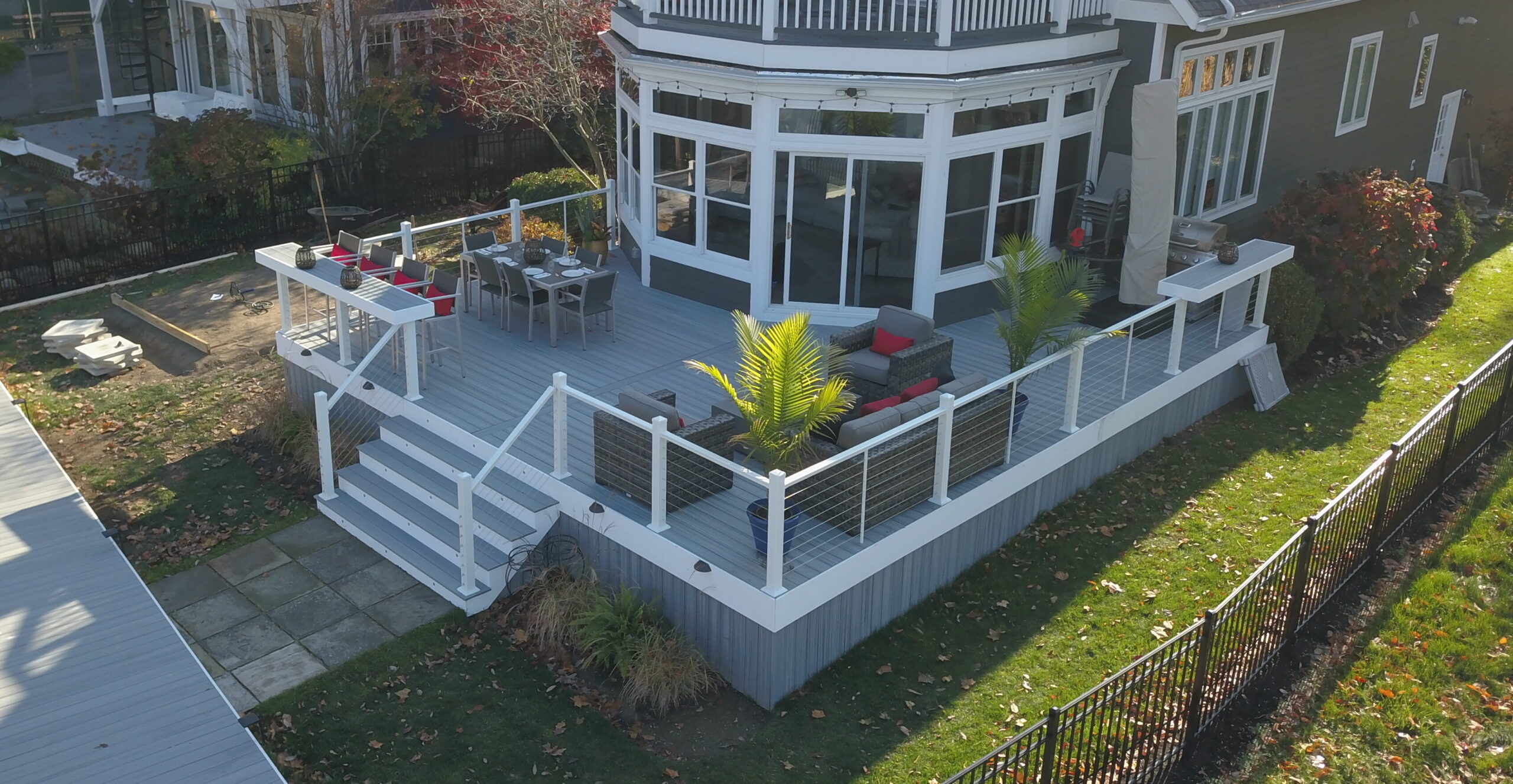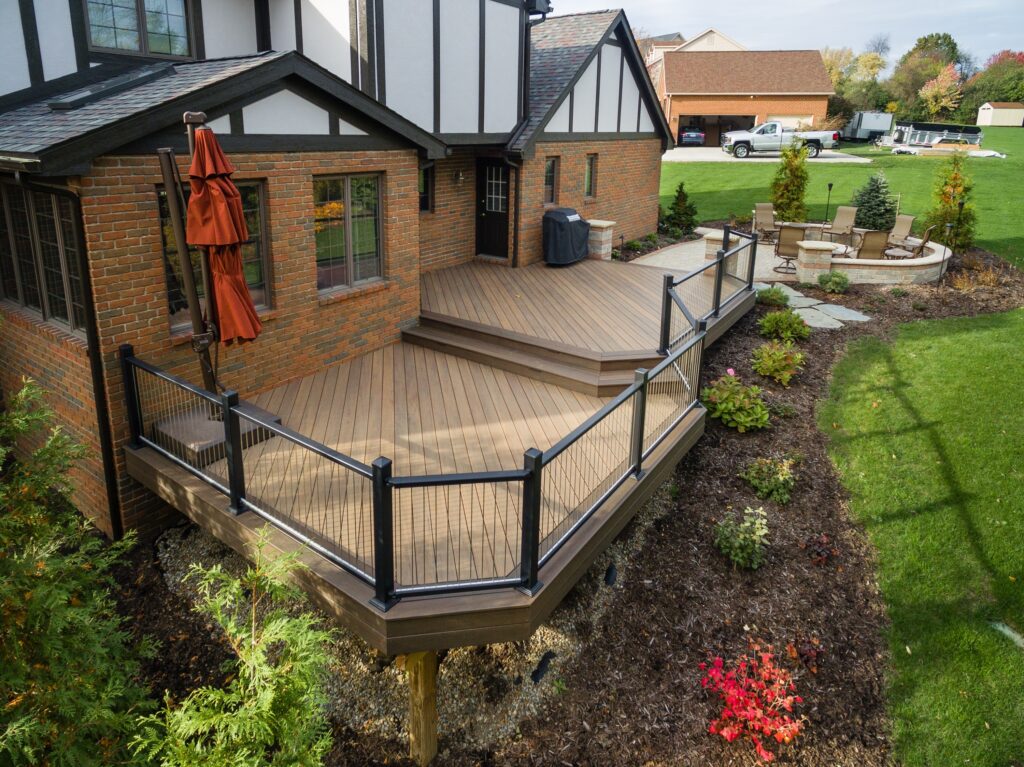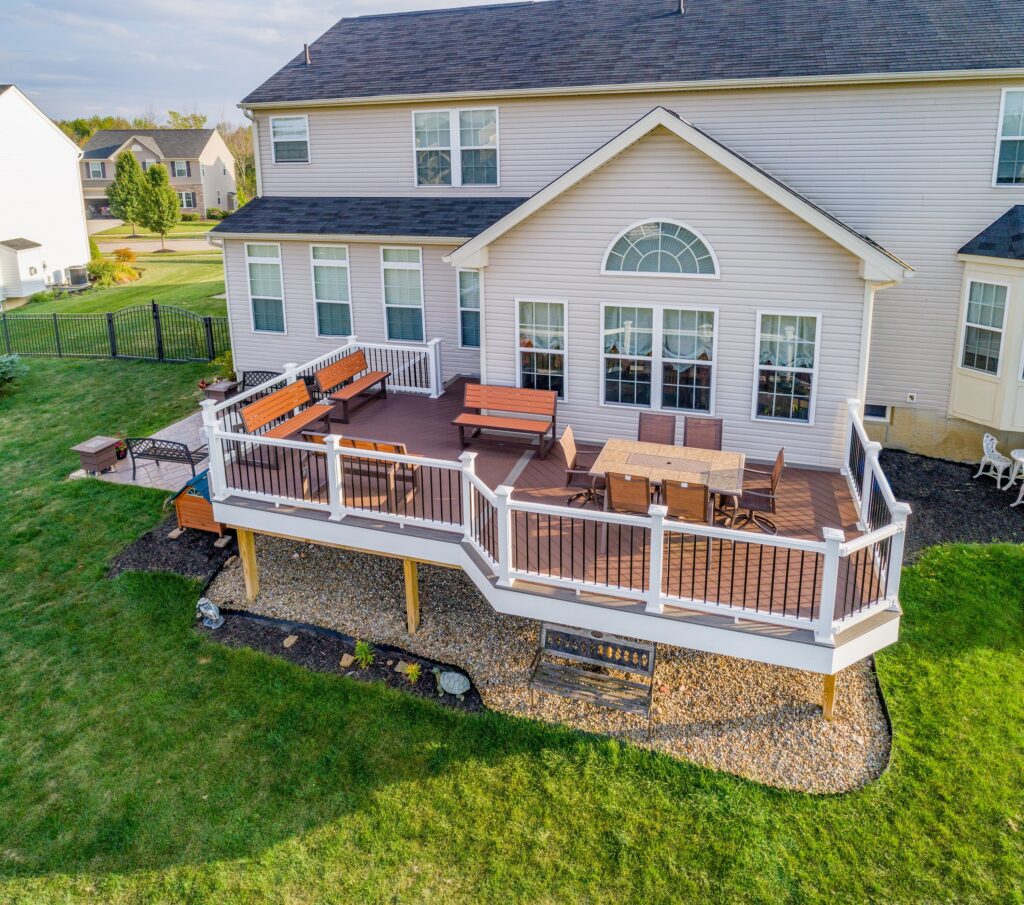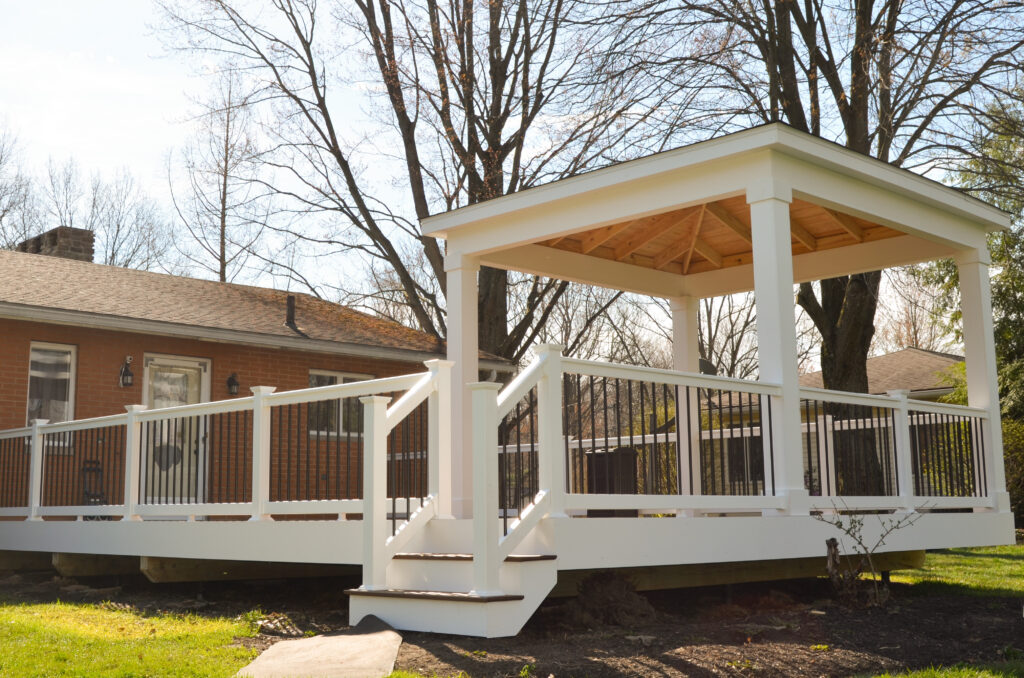When selecting the material for your deck project there are many factors to consider, including cost, durability, and overall appearance. Trex Decking products are a great option when you want a natural look and feel without the maintenance and cost of actual wood decks.
What is Trex?
Trex composite decking is a wood-alternative made from 95% recycled materials — a combination of ground-up wood from sawmills and furniture factories, and polyethylene plastic from commonly discarded products like stretch wrap, milk jugs, and grocery bags. Trex decking colors can match or complement your home’s exterior for a seamless finish, whatever its style.
Advantages of Trex Decking
Reduced Maintenance
Compared to wood, Trex composite decks are exceptionally low maintenance. All Trex products are mold and mildew resistant and won’t rot, crack, or attract termites. Trex railings and decking never need sanding, sealing or staining. You can easily restore the original beauty of your Trex deck boards with an annual scrub using mild soap.
Strength and Durability
Trex composite decking is stain resistant and splinter free, and can withstand harsh weather conditions. Easily cut and mold Trex decking to achieve curves, inlays, and creative details and designs without sacrificing strength or performance. Trex boards for decks can be as long as 20 feet, which means fewer end joints. They install with hidden stainless steel fasteners, eliminating the possibility that screws will work their way up through the surface of the board. The miters on the fascia and other details are held on tight with specially engineered screws.
Minimal Fading
Trex decking colors will stay as vibrant and beautiful as the day they were installed, guaranteed with their 25-year Stain & Fade Warranty offer. The newest, high-performance composites eliminate fading entirely with a protective polymer outer shell. (By contrast, wooden boards inevitably turn gray over time, and the first generation of composite deck boards experienced a slight fade after 12 to 16 weeks.)
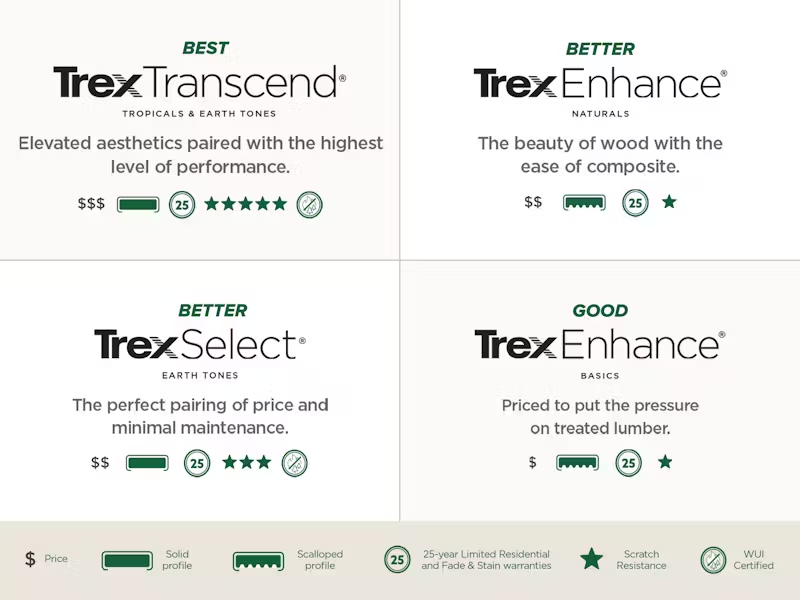
Environmentally Friendly
No trees are cut down in the creation of Trex products. Instead, Trex’s manufacturing process keeps more than 200,000 tons of plastic and hardwood scraps out of American landfills each year. Every 10 square feet of Trex decking contains nearly 3,000 recycled plastic shopping bags and 1,100 of the large, 1-gallon milk jugs.
Disadvantages of Composite Decking
Higher Initial Cost
While composite decking can be around 30 to 40% more than a wood deck, the annual cost of maintaining a wood deck (sanding, stripping, and staining) generally makes up the difference in 8 to 10 years.
Scratching and Staining
Composite decking is strong, but it’s not completely indestructible. It can be scratched by excited pets or moving furniture, and grease from outdoor grilling can stain if it’s not cleaned up quickly — similar to a wood deck.
Weight
Composite decking boards are heavier than wooden ones. It’s common practice to use more joists to prevent sagging.
Hot Underfoot
Some composite decking, especially darker colors, can get very hot in direct sunlight. Lighter decking colors and deeper grooved boards are generally more barefoot-friendly.
Is Trex Decking the Right Choice for You?
No matter what material you decide to use, Woodland Deck Company can help turn your outdoor living space into a great asset for your home. Contact us today to discuss your next deck project or to get an estimate. Also check out our article discussing the differences between TimberTech vs. Trex, and between Trex vs. AZEK.
